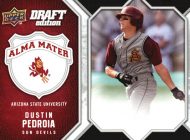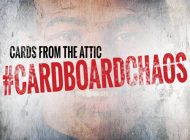Even though the Marlins completely crushed my Mets in the worst possible way on the last game of the season two years in a row, I can’t help but stand in awe of their organization. Rightfully so, fans get a bit upset with the team’s cheap budget and willingness to jettison off players once they cost anything of value. Attendance has never been great in Miami, which ownership attributes to a desperate need to play in a baseball park, as opposed to a football stadium. Fans will certainly say that a lack of continuity with the team means it’s harder to get attached to specific players, which is also reasonable.
That being said, look at the Marlins’ brief history, and consider this: when was the last time the Pirates, Orioles, Reds and Nationals/Expos has a record above .500? 1992, 1997, 2000 and 2003, respectively. Keep in mind, I set the bar pretty low here; these teams have had a fairly sad run of futility lately, beyond simply getting above that “average” mark.
And yet, the Marlins had a winning record last year. They’re screaming out the gate to start this season, with an 11-2 record. Most fans are scratching their heads trying to figure out how the team with the lowest payroll in the league, one that’s notorious for selling off players before free agency (and even sometimes before arbitration) has been able to put together the best run in the sport so far.
Reporters are talking about the strength of their pitching, the improved defense, and so on, which are all valid points. But here’s the bigger answer: unlike the Pirates, Orioles and Nationals, the Marlins have always had a plan. They recognize the marginal value of average players, and deal them off before it becomes clear that players like Scott Olsen or Mike Jacobs are fine major league players, but not excellent, and never will be. The team gets a lot of criticism for dealing off players of this level, but let’s take a more thorough look at just these four, all traded this past winter.
To clarify for non-stat heads, ERA+ and OPS+ are statistics that measure a player’s value (fielding and position removed for hitters), adjusted for environment and relative to league average. An ERA+ or OPS+ of 100 is exactly “average”. So for reference, Albert Pujols’ OPS+ last year was a strong 168, while Joey Gathright’s was 59.
• Olsen had an ERA+ of 101 last season, which means he was about as average as they come. Considering his WHIP was a very ugly 1.76 in 2007, it certainly seemed like a situation where “selling high” made sense. That, and I’m sure his propensity for driving drunk, getting into fights with teammates and getting tasered by law enforcement didn’t help much.

This is what an expendable player looks like.
• Mike Jacobs had an OPS+ of 109 in 2008, which is okay but not great for a first baseman. From that position, you really want solid offensive production. And while his 32 home runs were impressive, his .299 OBP was downright abysmal. Considering his career OBP mark is only .319, it’s not like this was going to improve much. You need your corner infielders to get on base more than that.
• Kevin Gregg’s ERA+ last year was 125, the best of his career. However, his ERA was 3.41 and his WHIP 1.28, which are unremarkable. Certainly good numbers for a reliever you’d like to have in your bullpen, but Gregg is not an elite closer. Considering that closers have the shortest shelf-life of any role in baseball, Gregg is now 31 and the Marlins had Matt Lindstrom waiting in the wings, this one was easy.
• Willingham’s OPS+ in 2008 was 118, which is certainly not horrible. At age 30 though, his value had pretty much peaked. So why bother paying his arbitration years? This was mostly a financial decision to be fair, but it’s not like they gave up a ton of potential by trading him. Certainly, the Nationals aren’t going out of their way to get him tons of playing time this year.
It’s worth noting that the Marlins don’t simply let these guys go, either. Olsen and Willingham were traded in a package deal, getting back Emilio Bonifacio, the team’s new speedy third baseman. Gregg was traded to the Cubs for Jose Ceda, who is much younger, and projects to be better than Gregg. Jacobs was traded for Leo Nunez, giving the Marlins a very useful arm in the pen in return for a first baseman with a .299 OBP. Perhaps some people on Wall Street could learn a thing or two from the Fish when it comes to buying low and selling high.
This isn’t just reserved for marginal players either. When the team traded Josh Beckett to the Red Sox, they got back the best player in baseball, Hanley Ramirez. When they had to trade Miguel Cabrera, they got a package back from Detroit that included stud center fielder Cameron Maybin, and top pitching prospect Andrew Miller.
And rather than putting the Marlins into the “too cheap to spend any money” column, let’s remember that they signed Hanley Ramirez to a $70 million extension that will keep him in Florida through 2014. So they are certainly willing to spend the money and retain players when warranted.
 So how does this add up to a successful run? The Marlins recognize the value of an average player they can replace, and will often trade him while his value has peaked. They have great scouting, and make these trades to get back better, younger players. Once those guys get older, they get traded for the next round of youngsters: lather, rinse, repeat.
So how does this add up to a successful run? The Marlins recognize the value of an average player they can replace, and will often trade him while his value has peaked. They have great scouting, and make these trades to get back better, younger players. Once those guys get older, they get traded for the next round of youngsters: lather, rinse, repeat.
This strategy allows them to field a competitive team with a $36.8 million payroll (understandably, one wonders what they could accomplish if the purse strings were loosened). There’s a philosophy there, a very specific strategy they’re following, and it’s working. It’s a plan. Before you marginalize the significance of that, ask an Orioles fan, or a Pirates fan about what their team’s strategy has been the last ten years or so (hint: none), and how they’ve done in that time.

The Marlins have been able to do a lot with very little, and while I may not agree with how Jeff Loria’s manages the team’s payroll or his tactics for getting a new stadium, you can’t help but appreciate what they’ve put together in Miami. Enjoy it while it lasts; in a few more years, this group will be headed off after their prime years are over, and the next crop of exciting, talented young players will come up to replace them. It’s the most exciting, dynamic revolving door in baseball.

















2 Comments
Amen, brother. Amen.
Living in Miami demands a certain resilience, knowing that the pruning process will soon bear fruit.
You nailed it. If the Marlins’ success was a face, it would now look like Olsen on a bad day.
Beeeeeats!
[…] or the pending negotations to keep hometown hero Joe Mauer on the team. Or the Marlins, and their remarkable ability to constantly cycle in young premium talent, but with no payroll to supplement or retain that roster. Or even the Rays, who would love to trade […]